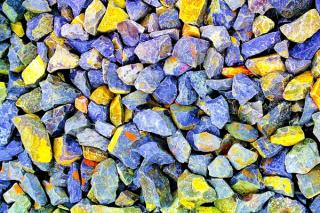
The Journey to Nature Positive: unlocking the power of Nature-based Solutions
by Ida Bailey, Charlotte Baharom, Eoin Noble
View post

ESG (Environmental, Social and Governance) has been increasingly on the radar for all types of businesses over the last few years. It is most relevant for publicly listed companies and given that most exploration and mining companies are listed, ESG has become relevant at all stages in the mining cycle. It’s still all very new, so we are going to go through some essential questions to help you get a better grasp of what it means.
ESG is a comprehensive framework that can help a mining company successfully navigate and balance the benefits to the planet, people and profit. There are a number of drivers behind the rapid adoption of ESG, one of which is the creation of the UN Principles of Responsible Investment, which currently has more than 2,300 signatories, representing $86 trillion of assets. The members are funds, fund managers and service providers in the financial sector. The list of signatories is an impressive who’s who in the financial and investment world and includes names like BNP Paribas, the Tesco Pension Trust, Moodys and the European Stability Mechanism.
You’ve probably realised by now that much of this used to be referred to as ‘sustainability’, although it was a more nebulous concept, meaning different things to different people. The advent of ESG has put more structure and meaning into the area.
The signatories to the UN PRI control a lot of money, and if you want any of them to invest in your project or company, whether directly or at arm’s length, you’re going to have to satisfy them as to your ESG credentials. That, however, is far from being the only reason to pay attention. Good ESG policies give you the opportunity to reduce energy and water consumption, decrease carbon output, improve community and employee engagement, and enhance regulatory relationships. As we’ve already mentioned, your ESG performance will affect your ability to raise capital, enter joint ventures or attract buyers for your project.
In Canada, all members of Mining Association of Canada (MAC) must sign up to the principles of Towards Sustainable Mining, an initiative of MAC. Members include Glencore, Teck and First Quantum. The Initiative for Responsible Mining deals with all parts of the mining and metals chain, from mining companies to retailers and includes AngloAmerican, Microsoft and BMW. ESG is now front and centre for the big players and major decision makers.
In the Mining Journal’s recently published Global Leadership Report, there were five key areas highlighted by mining executives:
Every single one of these is covered by ESG. If it’s important to the C-suite, it’s important to everybody.
The answer to this is simple: you and all your stakeholders are affected by the issues covered by ESG. Let’s break those issues down a bit more:
Just by looking at that list we can see that the issues covered are relevant to your colleagues or employees, the communities you operate in, the investors in your project and the relevant regulators. In most cases, your stakeholders are affected by more than one of the three aspects of ESG.
The earlier you start, the easier it will be to build on it. You may be experiencing no demand from whoever pays the bills at the moment, but if you’re planning on having a successful project, you had better be planning for that demand. The appropriate time for you to put a comprehensive ESG programme in in place is at least one step before you’re asked for it. Demonstrating that you’ve had an ESG programme up and running for a while, and that you’ve been developing and adding to it will significantly enhance your credentials. Your stakeholders will see that you are genuinely serious about it, and you’ll have learned a lot at an earlier, lower-cost stage in the mining cycle.
The good news is that at the exploration stage, you’re not having a huge impact, yet. You do need to be aware that good ESG requires you to move beyond ticking the box on regulatory compliance. No matter what stage you’re at, you need to have an ESG programme that really achieves something of value to the planet, to the project and to your stakeholders. One of the first things we would recommend is that you identify your major stakeholders and get their input to design a policy around ESG. Don’t just find out what your stakeholders’ concerns are, try and figure out what their solutions, or preferences are and do what you can to include those. Finally, use your imagination. It doesn’t just have to be a matter of throwing euros or dollars at an issue, bringing some creativity can help too and it will demonstrate that you’re genuinely engaging with this, and not just doing the bare minimum.
For further information, to discuss a project, or for any other advice that will help you get on the radar for the right reasons, please get in touch.

by Ida Bailey, Charlotte Baharom, Eoin Noble

